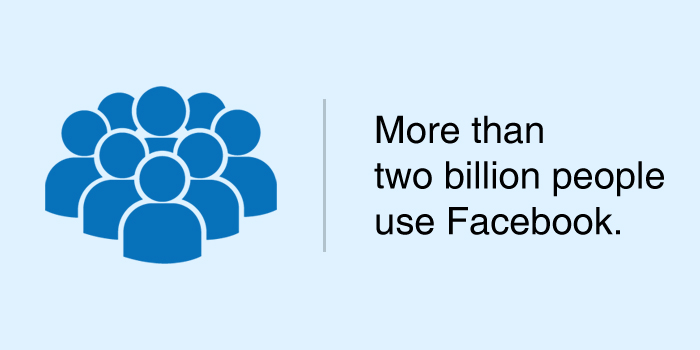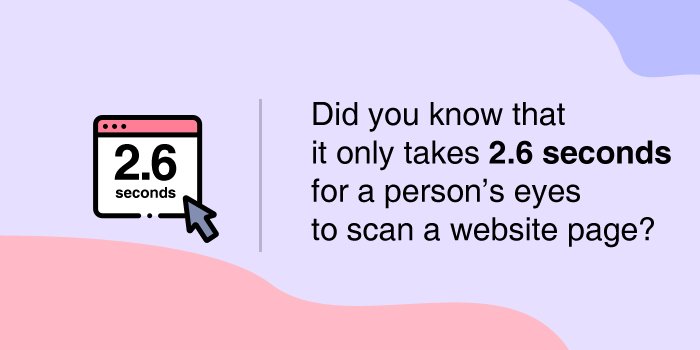


Facebook is undoubtedly the most preeminent social media network in the world. More than two billion people use Facebook. That’s nearly ⅓ of the entire world population. If you’re considering promoting your products and services, improving brand awareness, and driving sales and conversions, then Facebook is the perfect option.

Getting started with Facebook advertising is as simple as owning a business page and investing a few dollars into your first campaign to see what strategies will work best for you.
Though, if you’re new to Facebook Ads (or any other PPC advertising platform, for that matter), you may quickly figure out that attracting eyes to your campaign is simple. Convincing these complete strangers to show interest in your product and service and buy is a completely different obstacle.
But, it’s not impossible and you may find that improving Facebook Ads conversions is more straightforward than you originally thought.
To help you save and make more money with your budget, here are some very effective strategies to improve Facebook Ads conversions.
Table of Contents
ToggleA conversion means something different to every business involved in marketing and advertising campaigns. If your audience is B2C, then a conversion may mean a sale or purchase.
If your audience is B2B instead, then you may consider a conversion of a new email list subscriber. In either case, conversions are valuable to your bottom end and considered to be a success, rather than impressions.
With that said, what is considered a conversion event in your campaign? In other words, what do you want people to do once they see your ad?
Facebook Ads support standard conversions, such as:
You also have the option to create custom conversion events, if you want your target audience to do something else. Don’t expect all of your ads to serve the same purpose. Therefore, create separate ads for different conversion events.
First, consider how your goals will fit into your buyer’s journey, and plan accordingly.
An ad’s success is ultimately based on the performance of its landing page. When you decide where your planned conversions will take place, make sure that your landing page has everything in place to be successful.
Here is everything you should do to ensure your landing page’s success:

Did you know that it only takes 2.6 seconds for a person’s eyes to scan a website page. Using eye-catching visuals is a great way to improve the chances of consumer eyeballs landing on your ad instead of somewhere else.
Generally speaking, your ad’s visuals will be either a great or horrible first impression. Therefore, treat your visuals like a first handshake by following these core principles:
Following these practices will help your ads stand out directly in front of your target audience.
Copywriting doesn’t have to be difficult. In fact, effective copywriting involves psychology and human nature more than prose. Writing jargon-filled essays won’t hold well with your audience.
Instead, strive to create crisp copy. Otherwise, your audience may not even read it. Here are some effective copywriting tips every advertiser should strive for:
Copywriting is all about communicating in a way that doesn’t make you appear like an unscrupulous salesperson. The more natural and concise your copy appears, the more willing your target audience will be to read it and convert.

The call-to-action (CTA) is the singular most important aspect of your ad. When a person is finished observing your ad’s copy and visuals, the next thing they may do is click on the CTA.
A CTA motivates someone to commit the action you want them to do. Therefore, they must be persuasive and dynamic. To do so, use strong verbs like explore, find, discover, and start if you want to direct potential consumers to visit a product page.
If you want to drive subscriptions and purchases, use more direct phrases like “sign up” and “buy now”. Creating the right CTA is a paradox. The best CTAs are both direct and clever.
As you can see, using “buy now” in eCommerce ads is a straightforward way to compel someone to buy something. It’s important to note that your CTA should not be doing all of the heavy lifting for your ad.
Your ad’s copy and visuals should explain what the offer is. The CTA should seal the deal. Therefore, don’t spend too much time trying to come up with flamboyant CTA phrases to inspire conversions.
Oftentimes, the simplest approach will work best.
When creating your ad, check the box for “target expansion”. This will allow more groups similar to your audience to be targeted by your ad. However, you must indicate the parameters of this feature in the “interest targeting section”.
Not only will this feature allow you to reach more people. You can also improve your conversions while reducing your cost per conversion (CPC). Make sure that you create custom audiences before continuing.
What’s more is that if you already have an email subscriber list or other data sets, you can integrate them into Facebook Ads to automatically find similar people on Facebook. You can take all of this work a step further and use custom audiences to discover lookalike audiences.
These are people who have similar demographics and profiles to your existing target audience. Audience targeting is essential in making sure that the right people are seeing your ads.
Naturally, if your ad is targeting the right people, your conversion rate will improve on its own. Luckily, Facebook employs a bunch of helpful features to aid in creating both broad and granular audiences.
This will ultimately help you to achieve laser-focused ad delivery and boost your conversion rate.
Facebook Ads has a bunch of settings that are obscure to many beginners. Some prefer to run their campaigns on autopilot, forgetting to make use of certain functions like this one.
In the Budget and Schedule section, under the “Optimization for Delivery” function, make sure to select the “conversions” option. This will automatically optimize your ads to prioritize conversions instead of traffic.
As you can guest, choosing this option is optional. Nonetheless, there are a lot of case studies that prove how effective this feature is. Save the Children ran a test campaign pitting both ads optimized for traffic and conversions against each other.
They wanted to find out which option would help spur the most donations. Interestingly, they found that ads optimized for conversions received four times more donations than the alternative.
This test was conducted by a non-profit organization. If you sell products and services, just imagine the type of results you can achieve. Ads optimized for conversions are modeled after Facebook’s organic algorithms to reach your desired audiences.
No one knows the exact manner in which Facebook “optimizes” these ads, but this option is well worth a try.

Specific Facebook ad formats may best suit your campaign needs better than others, depending on your goals. For example, Adidas conducted a case study showing that using video was the perfect format to unveil different visuals of their Z.N.E Road Trip Hoodie.
Because of this, Adidas reduced their CPC by 43%. If you want to achieve the same results, here are some key things to consider:
As you can see, setting up a successful Facebook ads campaign goes beyond creating ad copy and captivating images. Choosing the right ad format can position it to reach and convert your target audience.
Using the right ad format can also help you reduce your CPC by a considerable margin.
No matter where you plan for your conversions to take place, you should ensure that all your conversions can be tracked from desktop to mobile devices. This is helpful, especially if you want to drive traffic to a mobile app.
You can’t assume that everyone who visits your mobile app will download it, interact, and convert. Therefore, tracking potential customers to your mobile app is a great way to figure out if you need to make changes to your ad or your app.
Even if you don’t intend to drive traffic to your mobile app, you should still install Facebook’s SDK for your app. This will help Facebook receive more data about your audience and expand it for better results.
Once you run your campaign, you’ll receive analytical data about how it’s performing. Essentially, it’s up to you to determine what worked and what didn’t to make the necessary changes.
Take note of all of the analytics of your campaign and transform them into insights. Take what you learned from your previous campaign to elevate your next one. Not every campaign will be successful.
However, if you’re learning from your mistakes and willing to try new things, you’ll quickly figure out how to run a successful and affordable Facebook Ads campaign.
Running Facebook ads is a full-time job. If you’re busy running your business, you may find that you don’t have the time or expertise to manage your campaign. On top of that, your campaign may not be as successful as you imagined.
If that’s the case, then we can help. At PPC.co, we specialize in managing successful PPC campaigns. If you want to learn more about how we can help you, contact us today to speak to a member of our team.
Please fill the below form to download the PDF
“*” indicates required fields.
Please fill the below form to download the PDF
“*” indicates required fields.
Please fill the below form to download the PDF
“*” indicates required fields.
Please fill the below form to download the PDF
“*” indicates required fields.
Please fill the below form to download the PDF
“*” indicates required fields.
Please fill the below form to download the PDF
“*” indicates required fields.